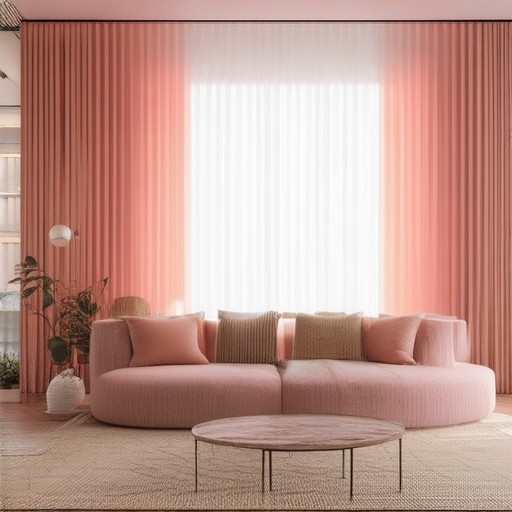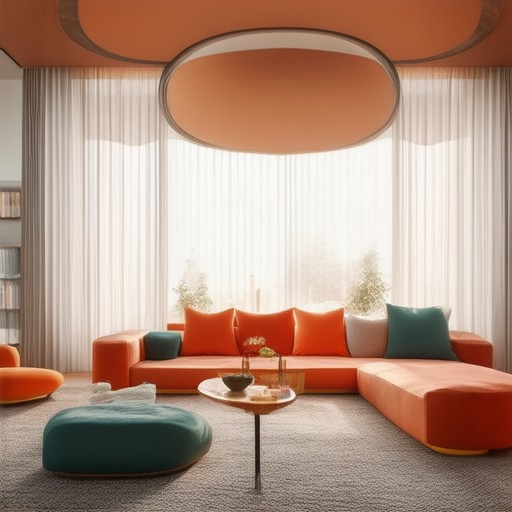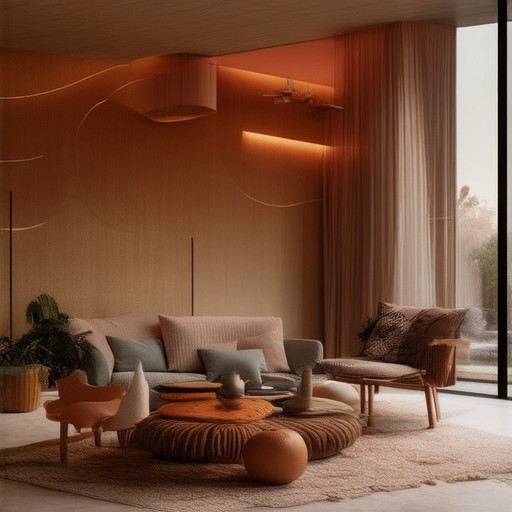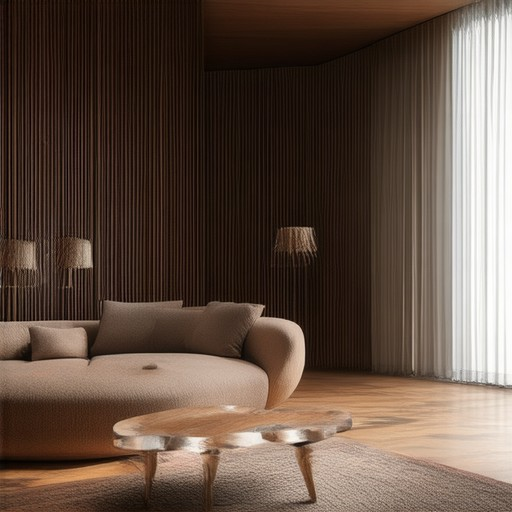Transforming your home into a space that feels cozy, stylish, and reflective of your personality doesn’t have to be overwhelming. Whether you’re new to decorating or looking to refresh your current setup, Beginner’s Guide to Home Decor: Answers to Your Top Questions offers practical advice and inspiration to help you achieve a well-decorated home. From understanding fundamental rules like the 3-5-7 rule and the 2/3 rule to exploring budget-friendly ideas, DIY projects, and space-saving solutions, this guide covers everything you need to know to create a welcoming environment. Start your home decor journey today and discover how simple changes can make a big impact!

The 3-5-7 Rule in Decorating
The 3-5-7 rule is a simple yet effective guideline for achieving a balanced and cohesive interior design. Here’s how it works:
- 3 Key Elements: Start with three essential elements in your space. These could be furniture, artwork, or architectural features that set the foundation for your decor.
- 5 Complementary Pieces: Add five items that complement the initial three. This could include pillows, rugs, or smaller decor items that tie the space together without overwhelming it.
- 7 Decorative Touches: Complete the look with seven decorative accents. These could be plants, candles, or personal items that add personality and finishing touches to the room.
This rule ensures that your space feels curated and intentional, avoiding clutter while creating visual interest. By following the 3-5-7 rule, you can easily enhance your home’s aesthetic with a thoughtful balance of elements.
The 2/3 Rule in Decorating
The 2/3 rule is a simple yet effective guideline for creating balanced and harmonious interior designs. This rule suggests that in any given space, two-thirds of the elements should be one color or style, while the remaining third should be another. This proportion creates visual interest and prevents the space from appearing too monotonous or overwhelming.
Here’s how you can apply the 2/3 rule:
- Color Balance: Use two-thirds of one color and one-third of another. For example, paint two-thirds of the room in a soft beige and one-third in a bold red accent.
- Furniture Arrangement: Place two-thirds of your furniture in one style or pattern and one-third in another complementary style. This creates contrast without chaos.
- Accessories and Decor: Incorporate two-thirds of decorative elements in one design and one-third in another. For instance, use two-thirds of your decor in a floral print and one-third in a geometric pattern.
To achieve the perfect balance, consider these tips:
- Select Your Palette: Choose two primary colors and one accent color. Use the two primary colors in a 2/3 ratio and the accent color sparingly for highlights.
- Accessorize Thoughtfully: Mix in textures and patterns to add depth without overwhelming the space. Two-thirds of your accents can be neutral, while one-third can introduce a pop of color or texture.
- Balance the Room: Arrange your artwork, plants, and lighting so that two-thirds of the arrangement feels cohesive, and one-third adds a touch of variety.
By applying the 2/3 rule, you can create a visually appealing and balanced interior that feels both inviting and stylish. Experiment with different proportions and color combinations to find what works best for your space.

How to Begin Decorating Your Home
Decorating your home can feel overwhelming, but with a well-planned approach, you can transform your space into a personalized sanctuary. Here’s a step-by-step guide to help you get started:
- Step 1: Assess Your Space
- Measure the dimensions of each room to ensure furniture fits properly.
- Identify the style you want to achieve—modern, traditional, bohemian, etc.
- Consider lighting, color schemes, and textures that align with your aesthetic.
- Step 2: Choose a Color Palette
- Select a dominant color for walls, and use complementary colors for accents.
- Test paint samples on large sections of the wall to see how they look in natural light.
- Consider neutrals for calming spaces or bold hues for statement walls.
- Step 3: Select Furniture and Accessories
- Start with essential pieces like a sofa, coffee table, and bed.
- Add functional yet stylish accessories like lamps, curtains, and throw pillows.
- Shop second-hand stores or local markets for unique finds.
- Step 4: Arrange Your Space
- Place furniture away from walls to maximize space and allow for movement.
- Group items by function—living area, dining area, and sleeping area.
- Use bookshelves and storage solutions to keep clutter hidden.
- Step 5: Add Personal Touches
- Hang artwork or photos in meaningful locations.
- Craft custom cushions or curtains with personal designs.
- Include plants or flowers to bring life into the space.
- Step 6: Layer Lighting
- Use a combination of overhead lights, table lamps, and floor lamps.
- Opt for dimmer switches to adjust the mood and ambiance.
- Accessorize with decorative lighting like string lights or lanterns.
- Step 7: Incorporate Textiles
- Choose bedding, curtains, and rugs that match your color scheme.
- mix and match patterns for visual interest without overwhelming the space.
- Use throws and blankets for added warmth and texture.
- Step 8: Final Touches
- Arrange small decor items like vases, bowls, and trays for tabletops.
- Plants low-maintenance greenery to keep your space fresh.
- Display personal items like books, art, or family heirlooms.
- Step 9: Enjoy the Process
- Take your time to experiment and tweak your design as needed.
- Don’t afraid to mix styles—eclectic decor can be beautiful!
- Relax and enjoy the result of your hard work!

What Are the Three Basics of Decorating?
The three fundamental principles of decorating revolve around creating a space that is both functional, emotionally resonant, and reflective of personal style. These principles ensure that a room feels cohesive, comfortable, and inviting.
- Functionality :
- Purposeful Layout : Arrange furniture and objects in a way that supports daily activities, such as eating, working, or relaxing.
- Space Utilization : Optimize every corner of the room to maximize storage and accessibility without compromising aesthetics.
- Comfort : Select soft furnishings and seating that promote relaxation and usability.
- Mood Creation :
- Color Harmony : Use color palettes that evoke desired emotions, whether calming neutrals or vibrant accents.
- Lighting Effects : Incorporate task lighting, ambient lighting, and accent lighting to set the tone of the space.
- Texture and Pattern : Mix textures like smooth fabrics, rough wood, or metallic accents to add visual interest and depth.
- Personality Reflection :
- Personal Style : Infuse the room with items that reflect your unique tastes, whether vintage finds, modern designs, or handmade pieces.
- Storytelling Through Decor : Use meaningful objects, travel souvenirs, or family heirlooms to create a narrative.
- Cohesive Aesthetic : Maintain a consistent theme or mix of styles that align with your lifestyle and preferences.
By balancing functionality, mood, and personality, you can transform a space into a truly special environment tailored to your needs and style.
What is the 60-30-10 Rule?
The 60-30-10 rule is a project management guideline often used in software development and product teams. It suggests allocating team members’ efforts in three categories:
- 60% – Core Development : Dedicate the majority of your team to building core features and functionalities.
- 30% – Support and Maintenance : Allocate a significant portion to support tasks, bug fixes, and ongoing improvements.
- 10% – Non-Essential Work : Reserve a small portion for exploratory work, experiments, or less critical features.
This approach aims to maximize productivity by focusing resources on high-priority tasks while ensuring essential work is maintained.

Where Do You Start Decorating First?
When planning a party or event, the key to successful decorating lies in creating a cohesive and visually appealing atmosphere. Here’s a step-by-step guide to help you decide where to begin:
- Establish the Theme : Begin by selecting a theme that aligns with the occasion. Whether it’s a birthday celebration, holiday gathering, or corporate event, a unified theme ensures your decorations feel purposeful and polished.
- Choose a Color Palette : Select colors that reflect the theme and create a harmonious look. Consider how these colors will influence the mood and overall aesthetic of the space.
- Assess the Space : Evaluate the room where the party will take place. Consider the layout, size, and available surfaces (walls, tables, doors) to determine where decorations will have the most impact.
- Create a Focal Point : Identify a central piece or feature that will act as the visual anchor of the room. This could be a large centerpiece on the table, a decorative wall hanging, or a striking arrangement of flowers.
- Set the Mood with Lighting : Decide on the type of lighting that suits the event. String lights, lanterns, or candles can add warmth and charm, while overhead lights ensure the space is well-illuminated.
- Decorate the Entryway : Start with the entrance to welcome guests warmly. Use a decorative wreath, pumpkins, or cornucopias to set the tone as soon as they arrive.
- Personalize Tables : Arrange place settings with attention to detail. Use themed tableware, personalized place cards, and centerpieces that tie into the overall theme.
- Add Floral Elements : Incorporate fresh flowers or artificial arrangements to bring color and life to the space. Use greenery to complement the theme and add texture.
- Enhance Ambiance with Candles : Place candles or lanterns around the room to create a soft glow and warm atmosphere, especially during autumn or winter events.
- Incorporate Personal Touches : Add unique elements that reflect the host’s personality or the event’s significance, such as family photos, custom art, or kid-friendly activities.
- Coordinate and Refine : Ensure all elements work together seamlessly. Start with one area, like the entryway, then move to the table settings, and so on, building a balanced and inviting space.
By following these steps, you’ll create a decorated environment that feels polished and reflective of your event’s theme, ensuring your guests are greeted by a visually stunning and memorable setting.





0 Comments